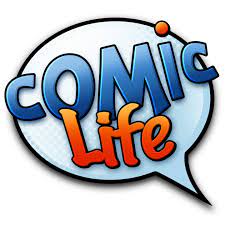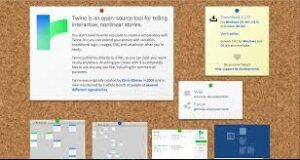As a pre-service teacher, I am eager to learn more about media—in all of its forms—to enhance my learning spaces. Media use in the classroom engages students, increases communication, and acts as a powerful tool for motivation and learning. This week we looked at Mayer’s 12 Principles of Multimedia Learning and defined the difference between interactive media, multimedia, and interactive multimedia. Below, I will provide examples of these different forms of media, as well as discuss their benefits and how they can effectively be used in a classroom setting.
Interactive Media
As described in our course, interactive media is any media whose outputs are affected by user inputs (Watt, 2022). Interactive media can be a really powerful learning tool because it encourages students to participate, collaborate, and take control of their learning. Gaming is a form of interactive media that can enhance many areas of the BC Curriculum. Gaming in education enhances creativity, problem solving, and digital citizenship for students. A few of my favorites are Minecraft and Prodigy. Bonus points: many interactive games for students are free for use in the classroom!


Multimedia
Multimedia combines two or more media together (2022). This could be text with images (slideshows, blogs etc.) or audio and visual media (TV, audiobooks, etc.). While combining text and images together, it is important to consider Mayer’s Principles of Multimedia Learning and ensure that the corresponding words and pictures are presented at the same time (temporal contiguity) and that the text and visuals are close to each other (spatial contiguity) (Learning House, 2019). It is also crucial to not add too many visuals to text to minimize extraneous processing, enhance retention and maximize the efficacy of multimedia messages and learning (2019). An example of multimedia that I like to use when creating infographics for the classroom is Canva.

Interactive Multimedia
Interactive multimedia is multimedia, with an interactive component. Utilizing interactive multimedia in the classroom provides flexibility and agency for an array of diverse learners as well as increases engagement and collaboration in the classroom. I am a huge fan of introducing coding in the classroom and applications like Comic Life 3 and Twine which are great for students to create their own interactive multimedia such as graphic novels and interactive storytelling boards.

 .
.
I am learning the importance of media use in the classroom and look forward to digging deeper into the applications of media(s) to enhance learning, retention, and engagement for my future students.
References:
Learning House. (2019). Multimedia learning principles – wiley. Retrieved September 7, 2022, from https://ctl.wiley.com/wp-content/uploads/2016/07/MultimediaPrinciples_Summary.pdf
